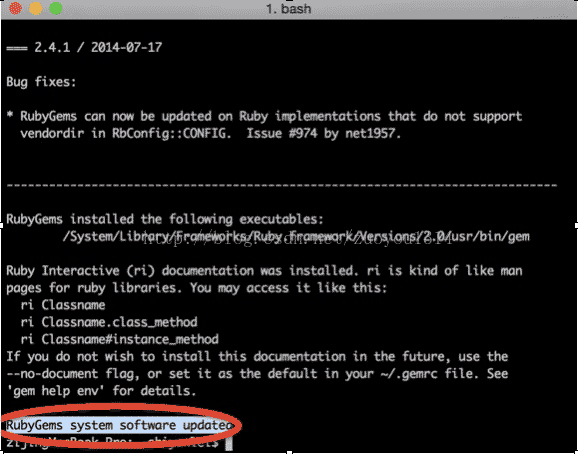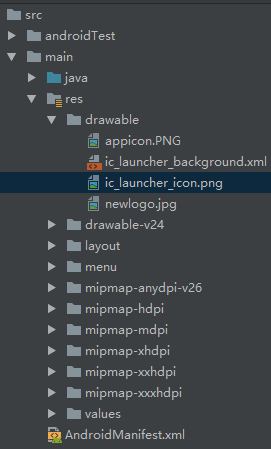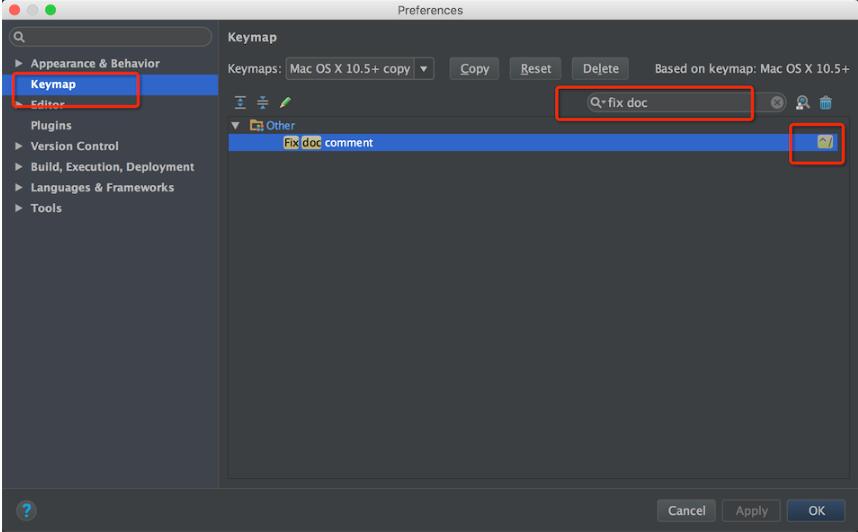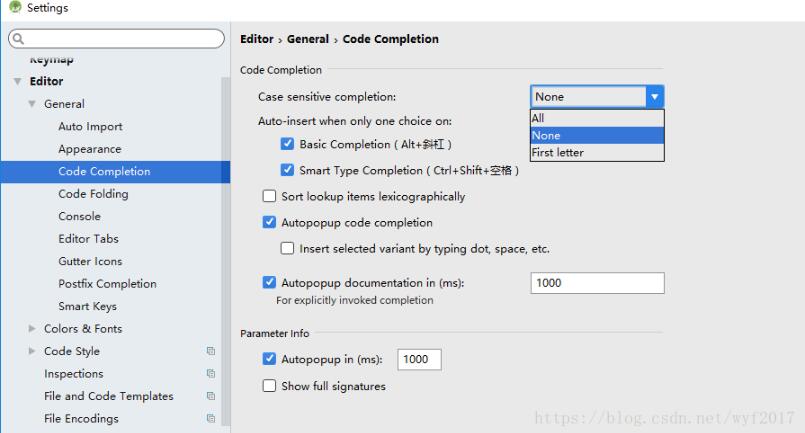本文详细讲解了Android显示系统SurfaceFlinger,文中通过示例代码介绍的非常详细。对大家的学习或工作具有一定的参考借鉴价值,需要的朋友可以参考下
WindowManagerImpl.java:
public void addView(@NonNull View view, @NonNull ViewGroup.LayoutParams params) {
applyDefaultToken(params);
mGlobal.addView(view, params, mDisplay, mParentWindow);
}WindowManagerGlobal.java:
public void addView(View view, ViewGroup.LayoutParams params, Display display, Window parentWindow) {
...
final WindowManager.LayoutParams wparams = (WindowManager.LayoutParams) params;
//创建 ViewRootImpl
ViewRootImpl root = new ViewRootImpl(view.getContext(), display);
view.setLayoutParams(wparams);
mViews.add(view);
mRoots.add(root);
mParams.add(wparams);
//设置 View
root.setView(view, wparams, panelParentView);
...
}创建 ViewRootImpl:
public ViewRootImpl(Context context, Display display) {
//获取 IWindowSession的代理类
this(context, display, WindowManagerGlobal.getWindowSession(),
false /* useSfChoreographer */);
}WindowManagerGlobal.java:
@UnsupportedAppUsage
public static IWindowSession getWindowSession() {
synchronized (WindowManagerGlobal.class) {
if (sWindowSession == null) {
try {
// Emulate the legacy behavior. The global instance of InputMethodManager
// was instantiated here.
// TODO(b/116157766): Remove this hack after cleaning up @UnsupportedAppUsage
//获取 IMS 的代理类
InputMethodManager.ensureDefaultInstanceForDefaultDisplayIfNecessary();
IWindowManager windowManager = getWindowManagerService();
//经过 Binder 调用,最终调用 WMS
sWindowSession = windowManager.openSession(
new IWindowSessionCallback.Stub() {
@Override
public void onAnimatorScaleChanged(float scale) {
ValueAnimator.setDurationScale(scale);
}
});
} catch (RemoteException e) {
throw e.rethrowFromSystemServer();
}
}
return sWindowSession;
}
}WindowManagerService.openSession:
// -------------------------------------------------------------
// IWindowManager API
// -------------------------------------------------------------
@Override
public IWindowSession openSession(IWindowSessionCallback callback) {
//创建session对象
return new Session(this, callback);
}再次经过 Binder 将数据写回 app 进程,则获取的便是 Session 的代理对象 IWindowSession。
创建完 ViewRootImpl 对象后,接下来调用该对象的 setView() 方法:
ViewRootImpl:
public void setView(View view, WindowManager.LayoutParams attrs, View panelParentView) {
synchronized (this) {
requestLayout(); //详见下面分析
...
//通过 Binder调用,进入 system 进程的 Session
res = mWindowSession.addToDisplayAsUser(mWindow, mSeq, mWindowAttributes, getHostVisibility(), mDisplay.getDisplayId(), userId, mTmpFrame, mAttachInfo.mContentInsets, mAttachInfo.mStableInsets, mAttachInfo.mDisplayCutout, inputChannel, mTempInsets, mTempControls);
...
}
}Session.java
@Override
public int addToDisplayAsUser(IWindow window, int seq, WindowManager.LayoutParams attrs,
int viewVisibility, int displayId, int userId, Rect outFrame,
Rect outContentInsets, Rect outStableInsets,
DisplayCutout.ParcelableWrapper outDisplayCutout, InputChannel outInputChannel,
InsetsState outInsetsState, InsetsSourceControl[] outActiveControls) {
//调用WMS的addWindow方法
return mService.addWindow(this, window, seq, attrs, viewVisibility, displayId, outFrame,
outContentInsets, outStableInsets, outDisplayCutout, outInputChannel,
outInsetsState, outActiveControls, userId);
}WindowManagerService.java:
public int addWindow(Session session, IWindow client, int seq,
LayoutParams attrs, int viewVisibility, int displayId, Rect outFrame,
Rect outContentInsets, Rect outStableInsets,
DisplayCutout.ParcelableWrapper outDisplayCutout, InputChannel outInputChannel,
InsetsState outInsetsState, InsetsSourceControl[] outActiveControls,
int requestUserId) {
Arrays.fill(outActiveControls, null);
int[] appOp = new int[1];
final boolean isRoundedCornerOverlay = (attrs.privateFlags
& PRIVATE_FLAG_IS_ROUNDED_CORNERS_OVERLAY) != 0;
int res = mPolicy.checkAddPermission(attrs.type, isRoundedCornerOverlay, attrs.packageName,
appOp);
if (res != WindowManagerGlobal.ADD_OKAY) {
return res;
}
WindowState parentWindow = null;
final int callingUid = Binder.getCallingUid();
final int callingPid = Binder.getCallingPid();
final long origId = Binder.clearCallingIdentity();
final int type = attrs.type;
synchronized (mGlobalLock) {
if (!mDisplayReady) {
throw new IllegalStateException("Display has not been initialialized");
}
...
//创建 WindowState
final WindowState win = new WindowState(this, session, client, token, parentWindow,
appOp[0], seq, attrs, viewVisibility, session.mUid, userId,
session.mCanAddInternalSystemWindow);
if (win.mDeathRecipient == null) {
// Client has apparently died, so there is no reason to
// continue.
ProtoLog.w(WM_ERROR, "Adding window client %s"
+ " that is dead, aborting.", client.asBinder());
return WindowManagerGlobal.ADD_APP_EXITING;
}
if (win.getDisplayContent() == null) {
ProtoLog.w(WM_ERROR, "Adding window to Display that has been removed.");
return WindowManagerGlobal.ADD_INVALID_DISPLAY;
}
// 调整 WindowManager的LayoutParams 参数
final DisplayPolicy displayPolicy = displayContent.getDisplayPolicy();
displayPolicy.adjustWindowParamsLw(win, win.mAttrs, callingPid, callingUid);
res = displayPolicy.validateAddingWindowLw(attrs, callingPid, callingUid);
if (res != WindowManagerGlobal.ADD_OKAY) {
return res;
}
// 打开输入通道
final boolean openInputChannels = (outInputChannel != null
&& (attrs.inputFeatures & INPUT_FEATURE_NO_INPUT_CHANNEL) == 0);
if (openInputChannels) {
win.openInputChannel(outInputChannel);
}
...
displayContent.getInputMonitor().setUpdateInputWindowsNeededLw();
boolean focusChanged = false;
//当该窗口能接收按键事件,则更新聚焦窗口
if (win.canReceiveKeys()) {
focusChanged = updateFocusedWindowLocked(UPDATE_FOCUS_WILL_ASSIGN_LAYERS,
false /*updateInputWindows*/);
if (focusChanged) {
imMayMove = false;
}
}
if (imMayMove) {
displayContent.computeImeTarget(true /* updateImeTarget */);
}
...
}
Binder.restoreCallingIdentity(origId);
return res;
}创建 SurfaceSession 对象,并将当前 Session 添加到 WMS.mSessions 成员变量。
Session.java:
void windowAddedLocked(String packageName) {
mPackageName = packageName;
mRelayoutTag = "relayoutWindow: " + mPackageName;
if (mSurfaceSession == null) {
if (DEBUG) {
Slog.v(TAG_WM, "First window added to " + this + ", creating SurfaceSession");
}
mSurfaceSession = new SurfaceSession();
ProtoLog.i(WM_SHOW_TRANSACTIONS, " NEW SURFACE SESSION %s", mSurfaceSession);
mService.mSessions.add(this);
if (mLastReportedAnimatorScale != mService.getCurrentAnimatorScale()) {
mService.dispatchNewAnimatorScaleLocked(this);
}
}
mNumWindow++;
}SurfaceSession 的创建会调用 JNI,在 JNI 调用 nativeCreate()。
android_view_SurfaceSession.cpp:
static jlong nativeCreate(JNIEnv* env, jclass clazz) {
SurfaceComposerClient* client = new SurfaceComposerClient();
client->incStrong((void*)nativeCreate);
return reinterpret_cast<jlong>(client);
}
static jlong nativeCreate(JNIEnv* env, jclass clazz, jobject sessionObj,
jstring nameStr, jint w, jint h, jint format, jint flags, jlong parentObject,
jobject metadataParcel) {
ScopedUtfChars name(env, nameStr);
sp<SurfaceComposerClient> client;
if (sessionObj != NULL) {
client = android_view_SurfaceSession_getClient(env, sessionObj);
} else {
client = SurfaceComposerClient::getDefault();
}
SurfaceControl *parent = reinterpret_cast<SurfaceControl*>(parentObject);
sp<SurfaceControl> surface;
LayerMetadata metadata;
Parcel* parcel = parcelForJavaObject(env, metadataParcel);
if (parcel && !parcel->objectsCount()) {
status_t err = metadata.readFromParcel(parcel);
if (err != NO_ERROR) {
jniThrowException(env, "java/lang/IllegalArgumentException",
"Metadata parcel has wrong format");
}
}
status_t err = client->createSurfaceChecked(
String8(name.c_str()), w, h, format, &surface, flags, parent, std::move(metadata));
if (err == NAME_NOT_FOUND) {
jniThrowException(env, "java/lang/IllegalArgumentException", NULL);
return 0;
} else if (err != NO_ERROR) {
jniThrowException(env, OutOfResourcesException, NULL);
return 0;
}
surface->incStrong((void *)nativeCreate);
return reinterpret_cast<jlong>(surface.get());
}通过以上JNI接口获取SurfaceComposerClient 对象,作为跟 SurfaceFlinger 通信的代理对象。
void SurfaceComposerClient::onFirstRef() {
//getComposerService() 将返回 SF 的 Binder 代理端的 BpSurfaceFlinger 对象
sp<ISurfaceComposer> sf(ComposerService::getComposerService());
if (sf != nullptr && mStatus == NO_INIT) {
sp<ISurfaceComposerClient> conn;
//调用 SF 的 createConnection()
conn = sf->createConnection();
if (conn != nullptr) {
mClient = conn;
mStatus = NO_ERROR;
}
}
}比如截屏接口就会通过SurfaceControl调用到其中的capture 接口:
status_t ScreenshotClient::capture(const sp<IBinder>& display, ui::Dataspace reqDataSpace,
ui::PixelFormat reqPixelFormat, const Rect& sourceCrop,
uint32_t reqWidth, uint32_t reqHeight, bool useIdentityTransform,
ui::Rotation rotation, bool captureSecureLayers,
sp<GraphicBuffer>* outBuffer, bool& outCapturedSecureLayers) {
sp<ISurfaceComposer> s(ComposerService::getComposerService());
if (s == nullptr) return NO_INIT;
status_t ret = s->captureScreen(display, outBuffer, outCapturedSecureLayers, reqDataSpace,
reqPixelFormat, sourceCrop, reqWidth, reqHeight,
useIdentityTransform, rotation, captureSecureLayers);
if (ret != NO_ERROR) {
return ret;
}
return ret;
}然后具体看下核心的SurfaceFlinger实现:
SurfaceFlinger.cpp:
sp<ISurfaceComposerClient> SurfaceFlinger::createConnection() {
//创建一个Client
const sp<Client> client = new Client(this);
return client->initCheck() == NO_ERROR ? client : nullptr;
}回到之前,创建完 ViewRootImpl 对象后,接下来调用该对象的 setView() 方法。在 setView() 中调用了 requestLayout() 方法,现在具体来看下这个方法调用流程:
@Override
public void requestLayout() {
if (!mHandlingLayoutInLayoutRequest) {
checkThread();
mLayoutRequested = true;
scheduleTraversals();
}
}
@UnsupportedAppUsage
void scheduleTraversals() {
if (!mTraversalScheduled) {
mTraversalScheduled = true;
mTraversalBarrier = mHandler.getLooper().getQueue().postSyncBarrier(); //启动TraversalRunnable
mChoreographer.postCallback(
Choreographer.CALLBACK_TRAVERSAL, mTraversalRunnable, null);
notifyRendererOfFramePending();
pokeDrawLockIfNeeded();
}
}
final class TraversalRunnable implements Runnable {
@Override
public void run() {
doTraversal();
}
}
void doTraversal() {
if (mTraversalScheduled) {
mTraversalScheduled = false;
mHandler.getLooper().getQueue().removeSyncBarrier(mTraversalBarrier);
if (mProfile) {
Debug.startMethodTracing("ViewAncestor");
}
//调用performTraversals performTraversals();
if (mProfile) {
Debug.stopMethodTracing();
mProfile = false;
}
}
}
private void performTraversals() {
// cache mView since it is used so much below...
final View host = mView; //它就是 DecorView
...
if (mFirst || windowShouldResize || viewVisibilityChanged || cutoutChanged || params != null
|| mForceNextWindowRelayout) {
mForceNextWindowRelayout = false;
if (isViewVisible) {
// If this window is giving internal insets to the window
// manager, and it is being added or changing its visibility,
// then we want to first give the window manager "fake"
// insets to cause it to effectively ignore the content of
// the window during layout. This avoids it briefly causing
// other windows to resize/move based on the raw frame of the
// window, waiting until we can finish laying out this window
// and get back to the window manager with the ultimately
// computed insets.
insetsPending = computesInternalInsets && (mFirst || viewVisibilityChanged);
}
...
try {
if (DEBUG_LAYOUT) {
Log.i(mTag, "host=w:" + host.getMeasuredWidth() + ", h:" +
host.getMeasuredHeight() + ", params=" + params);
}
if (mAttachInfo.mThreadedRenderer != null) {
// relayoutWindow may decide to destroy mSurface. As that decision
// happens in WindowManager service, we need to be defensive here
// and stop using the surface in case it gets destroyed.
if (mAttachInfo.mThreadedRenderer.pause()) {
// Animations were running so we need to push a frame
// to resume them
mDirty.set(0, 0, mWidth, mHeight);
}
mChoreographer.mFrameInfo.addFlags(FrameInfo.FLAG_WINDOW_LAYOUT_CHANGED);
}
// 关键函数relayoutWindow
relayoutResult = relayoutWindow(params, viewVisibility, insetsPending);
if (DEBUG_LAYOUT) Log.v(mTag, "relayout: frame=" + frame.toShortString()
+ " cutout=" + mPendingDisplayCutout.get().toString()
+ " surface=" + mSurface);
// If the pending {@link MergedConfiguration} handed back from
// {@link #relayoutWindow} does not match the one last reported,
// WindowManagerService has reported back a frame from a configuration not yet
// handled by the client. In this case, we need to accept the configuration so we
// do not lay out and draw with the wrong configuration.
if (!mPendingMergedConfiguration.equals(mLastReportedMergedConfiguration)) {
if (DEBUG_CONFIGURATION) Log.v(mTag, "Visible with new config: "
+ mPendingMergedConfiguration.getMergedConfiguration());
performConfigurationChange(mPendingMergedConfiguration, !mFirst,
INVALID_DISPLAY /* same display */);
updatedConfiguration = true;
}
} catch (RemoteException e) {
}
...
}
boolean cancelDraw = mAttachInfo.mTreeObserver.dispatchOnPreDraw() || !isViewVisible;
if (!cancelDraw) {
if (mPendingTransitions != null && mPendingTransitions.size() > 0) {
for (int i = 0; i < mPendingTransitions.size(); ++i) {
mPendingTransitions.get(i).startChangingAnimations();
}
mPendingTransitions.clear();
}
//开始绘制,其中调用了draw(fullRedrawNeeded);
performDraw();
} else {
if (isViewVisible) {
// Try again
scheduleTraversals();
} else if (mPendingTransitions != null && mPendingTransitions.size() > 0) {
for (int i = 0; i < mPendingTransitions.size(); ++i) {
mPendingTransitions.get(i).endChangingAnimations();
}
mPendingTransitions.clear();
}
}
if (mAttachInfo.mContentCaptureEvents != null) {
notifyContentCatpureEvents();
}
mIsInTraversal = false;
}再看下relayoutWindow的实现:
... if (mSurfaceControl.isValid()) {
if (!useBLAST()) {
//先创建一个本地Surface,然后调用copyFrom 将SurfaceControl信息拷贝到Surface中
mSurface.copyFrom(mSurfaceControl);
} else {
final Surface blastSurface = getOrCreateBLASTSurface(mSurfaceSize.x,
mSurfaceSize.y);
// If blastSurface == null that means it hasn't changed since the last time we
// called. In this situation, avoid calling transferFrom as we would then
// inc the generation ID and cause EGL resources to be recreated.
if (blastSurface != null) {
mSurface.transferFrom(blastSurface);
}
}
} else {
destroySurface();
}....SurfaceControl 类可以看作是一个 wrapper 类,最后会执行 copyFrom() 将其返回给 App 客户端:
@UnsupportedAppUsage
public void copyFrom(SurfaceControl other) {
if (other == null) {
throw new IllegalArgumentException("other must not be null");
}
long surfaceControlPtr = other.mNativeObject;
if (surfaceControlPtr == 0) {
throw new NullPointerException(
"null SurfaceControl native object. Are you using a released SurfaceControl?");
}
//通过JNI获取源SurfaceControl
long newNativeObject = nativeGetFromSurfaceControl(mNativeObject, surfaceControlPtr);
synchronized (mLock) {
if (newNativeObject == mNativeObject) {
return;
}
if (mNativeObject != 0) {
nativeRelease(mNativeObject);
}
//保存到全局mNativeObject用于外部调用
setNativeObjectLocked(newNativeObject);
}
}Surface 显示过程总结:
在 App 进程中创建 PhoneWindow 后会创建 ViewRoot。ViewRoot 的创建会创建一个 Surface,这个 Surface 其实是空的,通过与 WindowManagerService 通信 copyFrom() 一个NativeSurface 与 SurfaceFlinger 通信时。
关于Native Window:
Native Window是OpenGL与本地窗口系统之间搭建了桥梁。整个GUI系统至少需要两种本地窗口:
- (1)面向管理者(SurfaceFlinger)
SurfaceFlinger是系统中所有UI界面的管理者,需要直接或间接的持有“本地窗口”,此本地窗口是FramebufferNativeWindow。
- (2)面向应用程序
这类本地窗口是Surface。
正常情况按照SDK向导生成APK应用程序,是采用Skia等第三方图形库,而对于希望使用OpenGL ES来完成复杂界面渲染的应用开发者来说,Android也提供封装的GLSurfaceView(或其他方式)来实现图形显示。
①FramebufferNativeWindow
EGL需要通过本地窗口来为OpenGL/OpenGL ES创建环境。由于OpenGL/ES对多平台支持,考虑到兼容性和移植性。不同平台的本地窗口EGLNativeWindowType数据类型不同。
Android平台的数据类型是ANativeWindow,像是一份“协议”,规定了一个本地窗口的形态和功能。ANativeWindow是FramebufferNativeWindow的父类。
Android中,由于多缓冲技术,EGLNativeWindowType所管理的缓冲区最少2个,最大3个。
FramebufferNativeWindow初始化需要Golloc支持,步骤如下:
- 加载GRALLOC_HARDWARE_MODULE_ID模块,参见上节。
- 分别打开fb和gralloc设备,打开后的设备由全局变量fbDev和grDev管理。
- 根据设备的属性来给FramebufferNativeWindow赋初值。
- 根据FramebufferNativeWindow的实现来填充ANativeWindow中的“协议”
- 其他一些必要的初始化
②应用程序的本地窗口 - Surface
Surface也继承了ANativeWindow
class Surface : public ANativeObjectBase<ANativeWindow, Surface, RefBase>Surface是面向Android系统中所有UI应用程序的,即它承担着应用进程中的UI显示需求。
需要面向上层实现(主要是Java层)提供绘制图像的画板。SurfaceFlinger需要收集系统中所有应用程序绘制的图像数据,然后集中显示到物理屏幕上。Surface需要扮演相应角色,本质上还是由SurfaceFlinger服务统一管理的,涉及到很多跨进程的通信细节。
③Surface的创建
Surface将通过mGraphicBufferProducer来获取buffer,这些缓冲区会被记录在mSlots中数据中。mGraphicBufferProducer这一核心成员的初始化流程如下:
ViewRootImpl持有一个Java层的Surface对象(mSurface)。
ViewRootImpl向WindowManagerService发起relayout请求,此时mSurface被赋予真正的有效值,将辗转生成的SurfaceControl通过Surface.copyFrom()函数复制到mSurface中。
由此,Surface由SurfaceControl管理,SurfaceControl由SurfaceComposerClient创建。SurfaceComposerClient获得的匿名Binder是ISurfaceComposer,其服务端实现是SurfaceFlinger。而Surface依赖的IGraphicBufferProducer对象在Service端的实现是BufferQueue。
class SurfaceFlinger :
public BinderService<SurfaceFlinger>, //在ServiceManager中注册为SurfaceFlinger
public BnSurfaceComposer,//实现的接口却叫ISurfaceComposer④SurfaceFlinger服务框架:
Buffer,Consumer,Producer是“生产者-消费者”模型中的3个参与对象,如何协调好它们的工作是应用程序能否正常显示UI的关键。
Buffer是BufferQueue,Producer是应用程序,Consumer是SurfaceFlinger。
Surface内部提供一个BufferQueue,与上层和SurfaceFlinger形成一个生产者消费者模型,上层对应Producer,SurfaceFlinger对应Consumer。三者通过Buffer产生联系,每个Buffer都有四种状态:
- Free:可被上层使用;
- Dequeued:出列,正在被上层使用;
- Queued:入列,已完成上层绘制,等待SurfaceFlinger合成;
- Acquired:被获取,SurfaceFlinger正持有该Buffer进行合成;
如此循环,形成一个Buffer被循环使用的过程(FREE-> DEQUEUED->QUEUED->ACQUIRED->FREE)。
BufferQueue中的mSlots数组用于管理期内的缓冲区,最大容器是32。数据缓冲区的空间是动态分配的,应用程序与SurfaceFlinger都是使用OpenGL ES来完成UI显示。Layer类在SurfaceFlinger中表示“层”,通俗地讲就是代表了一个“画面”,最终物理屏幕上的显示结果就是通过对系统中同时存在的所有“画面”进行处理叠加而成。
到此这篇关于Android显示系统SurfaceFlinger详解的文章就介绍到这了。希望对大家的学习有所帮助,也希望大家多多支持编程学习网。
本文标题为:Android显示系统SurfaceFlinger详解


- 详解flutter engine 那些没被释放的东西 2022-12-04
- Android实现监听音量的变化 2023-03-30
- 作为iOS开发,这道面试题你能答出来,说明你基础很OK! 2023-09-14
- 最好用的ios数据恢复软件:PhoneRescue for Mac 2023-09-14
- SurfaceView播放视频发送弹幕并实现滚动歌词 2023-01-02
- Flutter实现底部和顶部导航栏 2022-08-31
- Android studio实现动态背景页面 2023-05-23
- Android MaterialButton使用实例详解(告别shape、selector) 2023-06-16
- Android实现轮询的三种方式 2023-02-17
- iOS 对当前webView进行截屏的方法 2023-03-01









